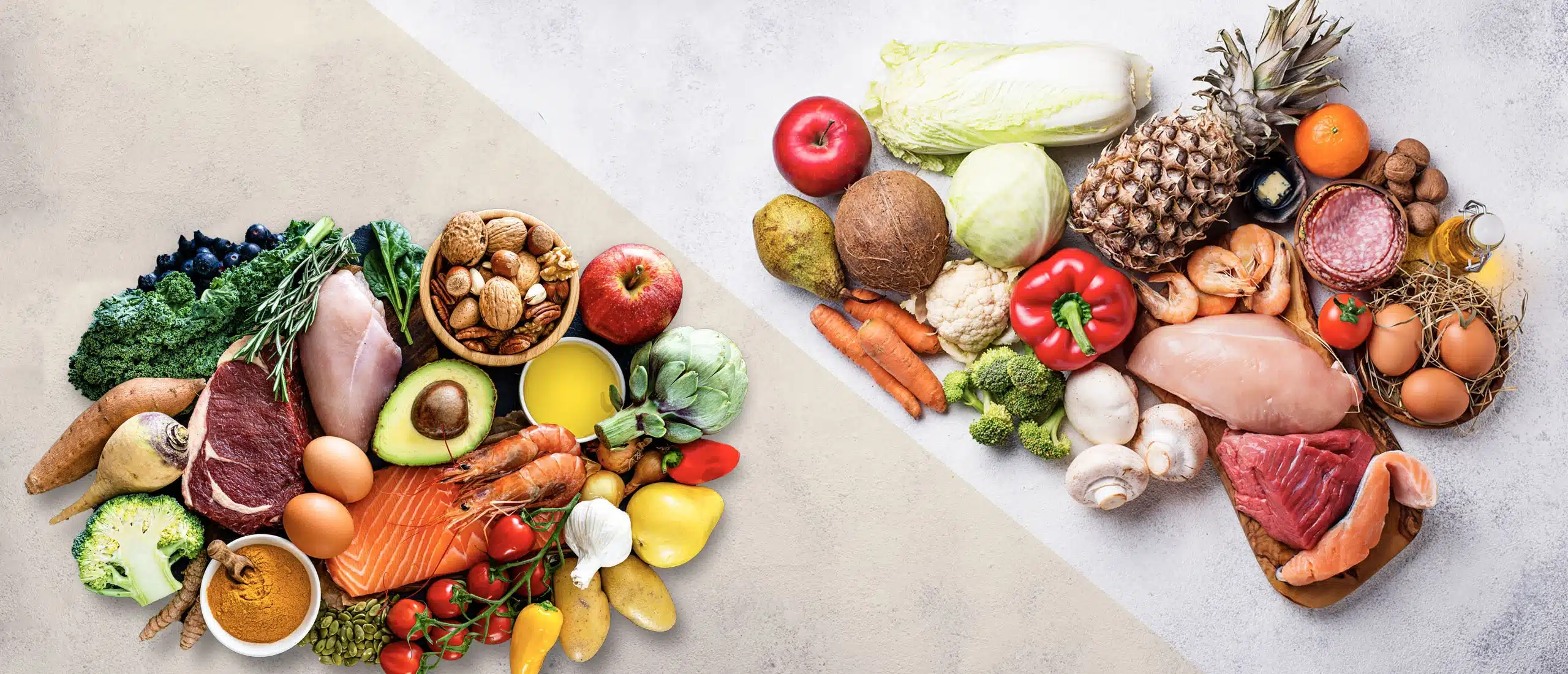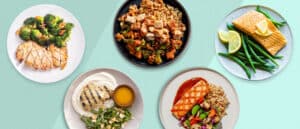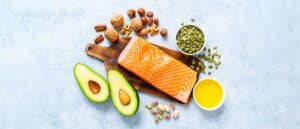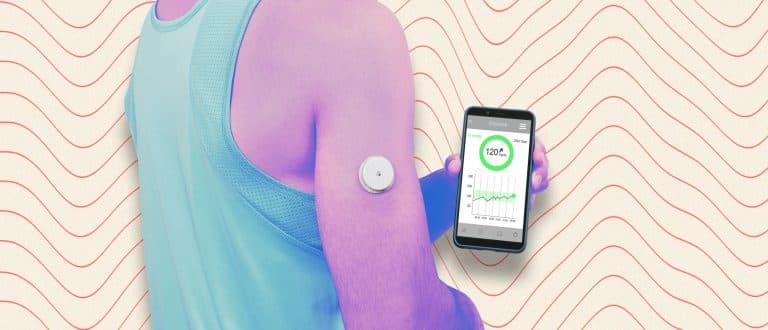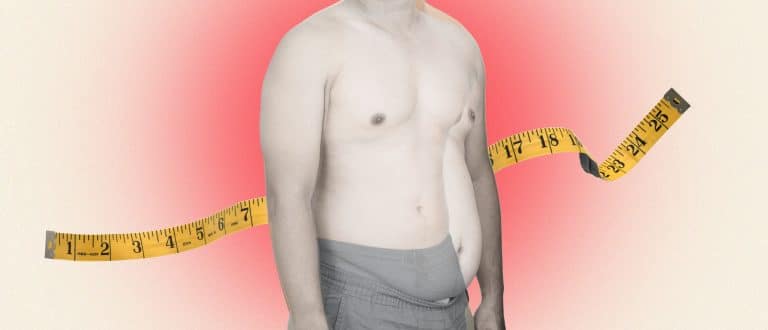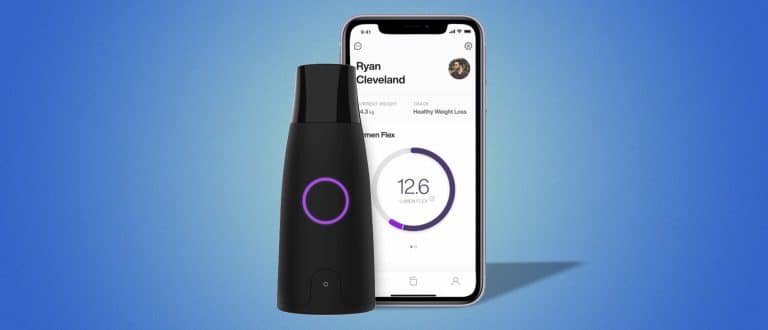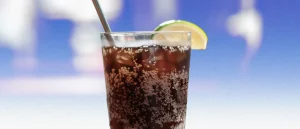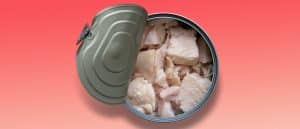In the Paleo vs Keto War, This Is the Healthier Diet, According to an R.D.
30-Second Takeaway
- The paleo and keto diets both have weight loss benefits and share similarities like restricting carb-heavy foods. But they vary drastically in ideology and macronutrient breakdown.
- The paleo diet emphasizes the unprocessed, whole foods eating style of Paleolithic hunter-gatherers, and doesn’t have a defined macronutrient breakdown.
- The keto diet is a high-fat, low carb diet that doesn’t dictate whether calories come from processed or unprocessed sources.
- The paleo diet is healthier, but the keto diet might be better for those who prefer hard numbers and strict guidelines.
You can’t hit up the gym (let alone your Instagram feed) without someone obsessing over the paleo or keto diet. At a glance, the two diets sound similar enough. Both restrict carb-heavy foods like grains and sugar, and both can help you shed weight (1, 2).
But there are key differences, says registered dietitian Imashi Fernando, MS, RDN, CDCES. For starters, the keto diet is low-carb and high-fat; but, offers no guidelines for the type of fat you eat (enter: all-you-can-eat bacon, and potentially sky high LDL cholesterol). The paleo diet, which mimics the unprocessed, whole foods eating style of Paleolithic hunter-gatherers, doesn’t have specific macro guidelines, but does rely on specific sources of fat like fatty fish, nuts and seeds, and certain cooking oils.
That’s just the tip of the low-carb iceberg. Here’s everything you need to know about how the paleo and keto diets compare.
What is a Keto Diet?
The keto (or ketogenic) diet is a high-fat, low-carb diet with a macronutrient distribution that favors fat, with moderate protein, and minimal carbs. The latter are your body’s preferred source of energy. When you cut them out of your diet, your body is forced to fat for fuel instead, which puts you into ketosis, a metabolic state linked to potential weight loss, blood sugar control, lower inflammation, and the reduced risk of chronic health issues like diabetes and cancer (2, 3).
Typical keto diet macro breakdowns:
- Fat: 65-90%
- Protein: 10-30%
- Carbs: <10%
For keto dieters, tight regulation of carb intake is critical. Eat too many carbs, and you’ll throw your body out of ketosis.
GO KETO
What is a Paleo Diet?
If you follow the paleo diet, sometimes called “the caveman diet,” you only eat the unprocessed foods that were available to your heavy-browed ancestral hunter-gatherers. Elements of our modern food system like processing and mass production can be damaging to human health.
Nixing the Twinkies and soda supports your body’s natural biological function, regulates digestion, and reduces your risk for chronic disease (4, 5, 6). Studies have found that the paleo diet can help with weight loss, reduce your risk of metabolic syndrome, and calm inflammation (7, 8). Not too shabby.
The paleo diet emphasizes:
- Meat and fish
- Eggs
- Nuts and seeds
- Fruits and vegetables
- Select fats like olive oil, avocado oil, coconut oil, lard, and tallow
- Minimally processed sweeteners like honey, maple syrup, coconut sugar, and raw stevia
It limits:
- Grains
- Legumes
- Processed sugar
- Most sources of dairy like milk and cheese
Similarities Between the Paleo and Keto Diets
The keto and paleo diets are more like cousins than twins, but they share some familial traits.
Eliminating grains and legumes
The paleo crowd passes on beans, pulses, and lentils since it’s unlikely cavemen chowed down on them. Paleo proponents also note grains and legumes contain anti-nutrients—compounds like lectins and phytates found in plant-based foods—that research suggests might block your body’s ability to absorb vitamins and minerals (9).
Keto dieters avoid grains and legumes because they tend to be carb heavy. Keto diets instead emphasize dark, leafy greens (like spinach and kale), and non-starchy veggies (tomatoes, broccoli, zucchini, spaghetti squash, asparagus), which are lighter on calories and carbs, but rich in nutrients and antioxidants.
Expert tip
If you enjoy grains and legumes but want to avoid anti-nutrients, cook ‘em: “Soaking and boiling is thought to reduce the anti-nutrient content of grains and legumes,” says Fernando. “Plus, the health benefits of eating cooked whole grains and legumes in moderation as part of a healthy diet far outweigh any potential/perceived negative impacts of anti-nutrients.”
Limiting added sugar
The paleo diet avoids processed foods, so sugar-packed protein bars and snacks are out. Unrefined sugar sources like maple syrup and honey are fair game.
Sugar—refined or not—is Enemy Number One on the keto diet, due to the high carb content. Sugar is sugar, to the keto crowd, and honey and maple syrup can still send your blood sugar through the roof and kick you out of ketosis.
Expert tip
Paleo or keto, it’s best to limit added sugars in your diet. According to the American Heart Association, men should get no more than 36 grams (or 9 teaspoons) a day—that’s less than the 39 grams of sugar found in a single 12-ounce can of Coca Cola.
Limiting starchy vegetables
All fruits and veggies are considered paleo, but stricter paleo dieters limit sugary fruits (like bananas) and starchy vegetables (like potatoes, squash, and beets) since they can spike blood glucose levels (10). Blood glucose variability (high highs and low lows) can predispose you to diabetes (11). Still, starchy veggies can be a good source of steady energy, which can come in handy if you’re more physically active—so, some paleo eaters opt to keep them around.
As for keto dieters, it all comes back to the carbs. Starchy vegetables are higher in carbs and calories than their non-starchy counterparts. A single baked potato might knock out nearly all your carbs for the day in one sitting.
Expert tip
As long as you eat starchy fruit and veg in moderation, they shouldn’t up your diabetes risk, says Fernando. Their fiber helps slow the release of glucose into your bloodstream, and their natural sugars are also absorbed slower than added sugars. Pair starchy carbs with fat and lean protein to reduce glucose spikes.
Emphasizing healthy fats
The paleo diet swerves industrial seed oils and trans fats, which involve extensive processing. Instead, they fill their diet with heart healthy, omega-3-rich fats like olive oil, avocado oil, tallow, lard, nuts, seeds, and fish (12).
Healthy fats are a cornerstone of the keto diet. Most variations of the diet also don’t limit sources of saturated fat like fatty cuts of meat, processed meat, butter, cream, and cheese. Saturated fat intake can increase your LDL (bad) cholesterol (13).
Expert tip
“Even though the keto diet doesn’t restrict the type of fat, it’s important to choose healthier fats and limit saturated fats to no more than 10 percent of daily calories for overall health and chronic disease prevention,” says Fernando. Watch out for keto snacks. Even ones low in carbs and added sugar can be high in saturated fat.
Helping with weight loss
Proponents of both keto and paleo claim the diets can result in impressive weight loss results. And short term studies are promising: One review concluded that the paleo diet significantly reduced weight, body mass index, and waist circumference (1). Another found the keto diet can boost weight loss (2). Still, the authors note longer, randomized controlled trials are needed to confirm these effects.
Expert tip
If you want to lose weight, you can’t just take up the keto or paleo diet and expect results. “Just like any diet, you’ll need to plan, track, and be mindful of your caloric intake,” says Fernando.
Major Difference Between the Paleo and Keto Diets
The keto and paleo diets have some critical differences. Here are the biggies.
Paleo focuses on unprocessed, whole foods
All paleo food choices come back to what our ancestors ate. If they didn’t hunt or gather it, it doesn’t belong on your plate.
Since the Paleolithic era preceded pesticides and modern farming, many paleo eaters opt for wild or grass-fed meat, and organic fruits and vegetables. These foods tend to be better for the environment and more nutrient-dense (14, 15). Win-win.
The paleo diet doesn’t have a prescribed macronutrient breakdown. If you prioritize paleo-approved foods, you pass the paleo test.
Keto focuses on macros
Whether your food comes from healthy, whole food sources or not, the defining element of the keto diet is the specific macronutrient breakdown. So long as you’re keeping your carbs low (below 10 percent of your total macros), and fat relatively high (above 65 percent) you qualify as a keto dieter.
Paleo vs Keto: Which Is Healthier?
“If I had to choose between keto and paleo, I’d go with paleo,” says Fernando. While it cuts back on added sugars, “the macronutrient composition of the keto diet makes it unbalanced, and in my opinion not healthy for long term health.”
The paleo diet allows for more flexibility, which might make it easier to stick to in the long run. “The whole food focus of the paleo diet may also provide a good framework for people struggling to identify which foods they should include and cut back on in a healthy diet,” Fernando adds.

ABOUT THE EXPERT
Imashi Fernando works in a large hospital system as a clinical dietitian and provides one-on-one nutrition counseling through her virtual private practice, Brown Sugar Nutrition PLLC. She holds a master’s degree in Nutritional Sciences from the University of Washington.


